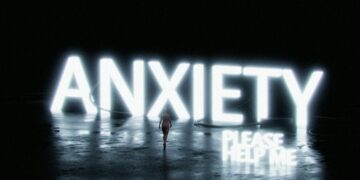Table of Contents
Introduction: The Uninvited Guest
It began not with a bang, but with a whisper.
For Suzanne, a composite character whose story reflects the journey of countless individuals, the pain was an uninvited guest that refused to leave.1
It wasn’t the familiar ache of a pulled muscle or the sharp sting of a cut.
This was a phantom sensation, a relentless burning and stabbing in her leg that seemed to arise from nowhere.
At night, the simple brush of a bedsheet against her skin felt like a flame, a phenomenon doctors call allodynia.3
This is the disorienting world of neuropathic pain—a chronic condition that can feel like a “never-ending marathon,” isolating its sufferers in a reality that others struggle to comprehend.5
After months of frustration, cycling through standard painkillers that offered no relief, Suzanne found herself in a doctor’s office, desperate.6
The physician, after listening carefully, suggested an unexpected path forward: an antidepressant.
The word hung in the air, thick with implication.
A wave of confusion, followed by a flicker of shame, washed over her.
Do they think this is all in my head? she wondered, a thought echoed by many who receive this recommendation.7
This moment captures the central paradox of one of modern medicine’s most important tools for nerve pain.
How can a medication designed to treat the mind also soothe a physical pain that feels so intensely, undeniably real? The answer lies not in psychology, but in the intricate wiring of the nervous system.
This report will explore the surprising science, the clinical evidence, and the deeply personal stories behind the use of antidepressants for neuropathic pain.
It is a journey that reveals how an accidental discovery became a neurological solution, offering a lifeline to many while presenting its own set of profound challenges.
Part I: The Brain’s Misbehaving Alarm System: A New Way to Understand Pain
To understand why a drug for depression can treat nerve pain, one must first grasp that not all pain is the same.
Most pain we experience is nociceptive—it’s a direct response to tissue damage, like a cut or a burn.
It’s a helpful signal that tells you to pull your hand from a hot stove.
Neuropathic pain, however, is fundamentally different.
It arises from a “lesion or dysfunction of the peripheral or central nervous system” itself.9
The problem isn’t the tissue; it’s the wiring.
This distinction is the source of much confusion and frustration.
A person feels a burning pain in their foot and naturally assumes the problem is in the foot.
When standard painkillers like NSAIDs, which target inflammation in tissues, fail to work, it can reinforce a feeling of being misunderstood, as if the pain isn’t real.3
Reframing the issue is essential: the problem is not with the lightbulb (the tissue), but with the faulty electrical wiring (the nerves) that controls it.
The Power of Analogy
Metaphors can make this complex science tangible.
One can think of the nervous system as a sophisticated car alarm.
Normally, it goes off only when a window is broken.
In neuropathic pain, the alarm’s sensitivity is dialed up to maximum; it shrieks not just for a broken window but for a leaf falling on the windshield or a gust of wind.10
This explains two hallmark symptoms: hyperalgesia (an exaggerated pain response to a painful stimulus) and allodynia (pain caused by a stimulus that shouldn’t be painful at all).3
Another useful analogy is the brain’s “volume dial”.10
The body has a natural system for modulating incoming pain signals, turning the volume up or down as needed.
In chronic neuropathic pain, this dial can become stuck on high.
Introducing the Descending Inhibitory Pathway
This “volume dial” is a real biological system known as the descending inhibitory pathway.
It’s a network of nerves that runs from control centers in the brain—like the periaqueductal gray (PAG) and rostral ventromedial medulla (RVM)—down the spinal cord.12
Its job is to act as a natural braking system, suppressing or dampening the danger signals that travel from the body up to the brain.12
The “brake fluid” for this system consists of key chemical messengers called neurotransmitters, primarily norepinephrine (also known as noradrenaline) and serotonin (also known as 5-HT).3
In many cases of neuropathic pain, this braking system is impaired.
There isn’t enough of this “brake fluid” to do the job, allowing pain signals to flood the brain unchecked.12
This is where antidepressants enter the story.
Part II: An Accidental Discovery, A Neurological Solution
The use of antidepressants for pain was an almost accidental discovery, first reported in the 1960s for trigeminal neuralgia.14
This history contributes to the stigma patients often feel.
However, the reason these drugs work is based on firm neuroscience, not on treating an underlying psychological issue.13
Crucially, the analgesic (pain-relieving) effect is independent of the antidepressant effect.3
Several pieces of evidence make this clear.
First, the pain relief often begins within a few days to a week, whereas the mood-lifting effects can take two to four weeks to manifest.13
Second, the doses required for pain management are generally much lower than those used for treating depression.16
Finally, these medications are effective for pain even in patients who show no signs of depression.7
Demystifying “Off-Label” Use
Many of these prescriptions are “off-label,” meaning the drug is being used for a condition not officially listed on its FDA-approved packaging.
This can sound alarming, but it is a legal, common, and often vital medical practice, accounting for as much as 20% of all prescriptions written.18
The FDA approval process for adding a new “indication” to a drug’s label is incredibly long and expensive.
Clinical practice and scientific evidence often outpace this regulatory process.18
Prescribing off-label allows physicians to use their clinical judgment and the most current research to provide the best possible care, especially for complex conditions like neuropathic pain.18
The Mechanism of Action: Turning the Brakes Back On
Antidepressants that work for pain belong to a class of drugs called reuptake inhibitors.3
To understand how they work, one can use another analogy.
Imagine the synapse—the tiny gap between two nerve cells—is a room where two people are having a conversation.
One person sends a message (a neurotransmitter like norepinephrine or serotonin).
Immediately after, a “clean-up crew” (a reuptake transporter protein) rushes in and removes the messenger chemical from the room, ending the signal.21
A reuptake inhibitor essentially tells this clean-up crew to take a break.
By blocking the reuptake process, the medication leaves more of the messenger chemical in the synapse for a longer period.
This results in a stronger, more sustained signal.21
In the context of the descending pain pathway, this boost in norepinephrine and serotonin effectively “refills the brake fluid,” reinforcing the body’s natural pain-control system and turning down the volume on pain signals traveling up the spinal cord.12
The Crucial Role of Norepinephrine
A critical finding from decades of research is that for pain relief, norepinephrine is the key player.
While serotonin helps, the evidence overwhelmingly points to norepinephrine as the primary driver of analgesia.3
This explains why not all antidepressants are effective for pain.
The evidence is stark when comparing drug classes using a metric called the Number Needed to Treat (NNT).
The NNT represents how many patients must be treated with a drug for one of them to experience a 50% reduction in pain.13
A lower NNT indicates a more effective drug.
- Drugs that strongly inhibit the reuptake of both norepinephrine and serotonin (like Tricyclic Antidepressants or TCAs) have an excellent NNT of 2-3.9
- Newer drugs that also target both neurotransmitters (Serotonin-Norepinephrine Reuptake Inhibitors or SNRIs) have a good NNT of 4-7.9
- Drugs that target only serotonin (Selective Serotonin Reuptake Inhibitors or SSRIs) have a poor NNT of around 7 or higher and are generally considered ineffective for neuropathic pain.9
The “secret sauce” appears to be the boost in norepinephrine, which acts directly on specific targets in the spinal cord (α2-adrenergic receptors) to inhibit incoming danger signals.13
The following table provides a comparative overview of the main antidepressant classes used for nerve pain.
| Class | Examples | Mechanism of Action | Efficacy (NNT for 50% Pain Relief) | Key Takeaway |
| Tricyclic Antidepressants (TCAs) | Amitriptyline, Nortriptyline, Imipramine, Desipramine 16 | Strong Norepinephrine (NE) & Serotonin (5-HT) reuptake inhibition. Also block other receptors (histamine, muscarinic), causing side effects.9 | Excellent (2-3) 9 | The historical “gold standard” for efficacy but carries a significant side effect burden. |
| Serotonin-Norepinephrine Reuptake Inhibitors (SNRIs) | Duloxetine (Cymbalta), Venlafaxine (Effexor), Milnacipran (Savella) 16 | More selective NE & 5-HT reuptake inhibition without the “dirty” receptor blockade of TCAs.3 | Good (4-7) 9 | A modern first-line option with a better balance of efficacy and tolerability. Duloxetine has the strongest evidence base in recent reviews.27 |
| Selective Serotonin Reuptake Inhibitors (SSRIs) | Fluoxetine (Prozac), Paroxetine (Paxil) 16 | Primarily 5-HT reuptake inhibition.16 | Poor (~7 or higher) 9 | Generally not effective for neuropathic pain, highlighting the primary importance of norepinephrine for analgesia. |
Part III: Choosing a Path: The Old Guard vs. The New Contenders
The decision of which antidepressant to use is a nuanced one, balancing potent efficacy against the risk of side effects and considering the individual patient’s health profile.
The “Gold Standard” with a Catch: Tricyclic Antidepressants (TCAs)
For decades, TCAs like amitriptyline have been considered the “gold standard” for neuropathic pain due to their powerful effects.28
They are the most studied, most cost-effective, and, according to NNT data, the most likely to produce significant pain relief.3
An NNT of 2-3 means that for every three patients treated, one will achieve at least 50% pain reduction—a remarkable outcome in the challenging field of pain medicine.9
However, this efficacy comes with a significant trade-off.
TCAs are often called “dirty” drugs because they are not selective.
In addition to blocking norepinephrine and serotonin reuptake, they also block several other receptors, leading to a host of side effects.25
Anticholinergic effects include dry mouth, blurred vision, constipation, and urinary retention, while antihistaminic effects cause drowsiness and weight gain.17
A more serious concern is the potential for cardiotoxicity, including heart rhythm disturbances, making them a risky choice for patients with pre-existing cardiac conditions and particularly dangerous in an overdose.17
Within the TCA class, a key distinction exists between tertiary amines (e.g., amitriptyline) and secondary amines (e.g., nortriptyline).3
The tertiary amines are generally “dirtier” and cause more side effects.
Secondary amines are more selective for norepinephrine and tend to be better tolerated, making them a preferable choice, especially in older adults.3
A More Targeted Approach: Serotonin-Norepinephrine Reuptake Inhibitors (SNRIs)
The newer class of SNRIs, which includes duloxetine (Cymbalta) and venlafaxine (Effexor), represents a more targeted approach.32
These drugs were designed to provide the dual benefit of serotonin and norepinephrine reuptake inhibition without the messy blockade of other receptors that plagues TCAs, resulting in a more favorable side effect profile.3
Their NNT for pain relief is higher (meaning they are statistically less effective) than TCAs, ranging from 4 to 7.9
However, this is where the clinical picture becomes more complex.
Recent, large-scale systematic reviews by organizations like the Cochrane Collaboration have questioned the quality of the older evidence supporting TCAs.34
A landmark 2023 review concluded that
duloxetine is the only antidepressant for which there is high-certainty evidence of a moderate, clinically meaningful effect on chronic pain.27
This reflects a potential shift in evidence-based practice, where the proven, moderate benefit and better safety profile of a drug like duloxetine may be preferred over the potentially greater but less reliably documented benefit of an older TCA.
SNRIs also offer a significant practical advantage for the many chronic pain patients who also suffer from depression or anxiety.
Drugs like duloxetine and venlafaxine are effective for both mood and pain at the same dosages, allowing for treatment of two conditions with a single medication.16
The Clinical Bottom Line
The choice of medication is a collaborative decision between doctor and patient.
For a younger, healthy individual whose sleep is severely disrupted by pain, the sedative effects of a low-dose TCA might be a welcome side effect, making it a powerful first-line choice.17
However, for an older patient, someone with heart issues, or a person concerned about side effects, an SNRI like duloxetine is often the safer, better-tolerated, and more rigorously evidenced starting point.9
Part IV: The Lived Reality: A Journey of Titration, Side Effects, and Hope
Starting one of these medications is not a quick fix; it is the beginning of a journey that requires patience, communication, and careful management.
The First Steps: A Test of Patience
Regardless of the drug chosen, the clinical advice is universal: “Start low, go slow”.16
Treatment begins with a very low dose, often taken at bedtime to minimize daytime drowsiness, and is gradually increased every week or so to find the optimal balance between pain relief and side effects.17
This process demands patience.
While some people feel a benefit within the first one to two weeks, it can take six to eight weeks at an adequate dose to experience the full effect.36
This waiting period can be challenging, and it is a critical point where many people, feeling no immediate relief, give up on a treatment that might have eventually worked.28
When It Works: “A Lifesaver”
For those who find the right medication at the right dose, the results can be profound.
Patient forums and drug reviews are filled with stories of people for whom these medications have been a “lifesaver”.28
One man in his 70s credits 40 years of a productive academic life to the amitriptyline that finally controlled his debilitating migraines.39
Another patient described the “indescribable relief” of starting duloxetine and realizing, after ten years of constant nerve pain that felt like “being pricked with a needle every second,” that the sensation was simply gone.40
The goal of treatment is rarely complete pain elimination.
A 30% to 50% reduction in pain is considered a clinical success.41
For someone whose life has been consumed by pain, this moderate relief can be the difference between being bedridden and reclaiming a life of activity, work, and social connection.
The Other Side of the Coin: Intolerable Side Effects and Withdrawal
This hope must be balanced with the difficult reality that for many, the journey is not successful.
Some people experience side effects that are simply intolerable.
Patients describe a “weird,” “foggy,” or “zombie-like” feeling that makes daily life impossible.43
One user had to stop amitriptyline because the sedation was so overwhelming she couldn’t function at work, even on a very low dose.44
Another stopped duloxetine after it caused severe constipation.43
An even more serious, and often under-discussed, risk is withdrawal.
While most clinical literature describes a mild, short-term “discontinuation syndrome” with flu-like symptoms and dizziness 30, a growing body of patient-reported evidence reveals a much darker potential reality.45
For a subset of individuals, stopping an antidepressant can trigger a severe, long-term condition sometimes called “protracted withdrawal” or “antidepressant withdrawal injury”.46
The story of Phillipa Munari is a harrowing example.
Six to nine months
after tapering off her antidepressant, she developed new and debilitating nerve pain, exhaustion, and extreme anxiety that left her bedridden for two years.46
Sven Huber, after stopping his medication, was left with persistent emotional blunting—an inability to feel joy, love, or even sadness—and lasting sexual dysfunction.46
These accounts highlight a disturbing possibility: that for some, the treatment can lead to new, and in some cases permanent, neurological problems.
This underscores the lack of long-term safety data noted in major scientific reviews and points to a significant gap between the short-term focus of many clinical trials and the long-term lived experience of patients.27
A Patient’s Guide to Managing Common Side Effects
While serious risks exist, many common side effects can be managed with practical strategies.
Being proactive can help patients tolerate a medication long enough to see if it will provide relief.
| Side Effect | Patient-Sourced Tips & Strategies |
| Drowsiness / Fatigue 30 | Take the dose 1-3 hours before bedtime, or even earlier in the evening if morning grogginess is an issue.36 Avoid alcohol, which significantly worsens drowsiness.36 Do not drive or operate machinery until you know how the medication affects you.49 |
| Dry Mouth 30 | Sip water regularly throughout the day. Chew sugar-free gum or suck on sugar-free hard candy to stimulate saliva.47 Avoid caffeine, alcohol, and tobacco, which can worsen dryness.50 |
| Constipation 30 | Increase dietary fiber with fresh fruits, vegetables, and whole grains.47 Drink plenty of water. Incorporate regular physical activity, like a daily walk.47 Discuss fiber supplements or stool softeners with a pharmacist if needed.50 |
| Dizziness / Lightheadedness 30 | This is often due to a drop in blood pressure upon standing (orthostatic hypotension). Always rise slowly from a sitting or lying position.50 Use handrails or furniture for support. Ensure you are well-hydrated.47 |
| Weight Gain 30 | Some antidepressants can increase appetite.37 Keeping a food diary can help monitor intake. Focus on nutrient-dense, lower-calorie foods and get regular physical activity. If weight gain is a significant concern, discuss it with your doctor.50 |
Conclusion: A Conversation, Not Just a Prescription
We return to Suzanne.
After a period of careful trial and error, she has settled on a low dose of an SNRI.
The pain is not gone, but it has been reduced by about 40%.
The “volume” has been turned down from an unbearable shriek to a manageable hum.
This relief has allowed her to reclaim her life—to work, to socialize, to sleep through the night.
But it is a new kind of life, one that requires diligent management of her medication and a keen awareness of her body.53
Her story encapsulates the complex reality of using antidepressants for nerve pain.
These drugs are not a psychological crutch but a valid, science-based tool that works on the neurochemistry of pain pathways.
The choice of medication is a highly personal calculation, balancing the proven efficacy of older drugs against the better safety profiles and evolving evidence for newer ones.
There is no single “best” drug for everyone.
The journey requires a partnership between an informed patient and a listening physician.
It is a process of shared decision-making, where goals, fears, and side effects are discussed openly and honestly.56
While many find life-changing relief, the risks of side effects and the potential for severe, long-term withdrawal are real and must be part of that conversation.
Ultimately, the goal is not to deter people from a potentially transformative treatment, but to arm them with the knowledge to navigate its complexities, advocate for their own care, and find their own path back to a life less defined by pain.
Sidebar: How to Talk to Your Family and Friends About Your Treatment
Explaining why you are taking an “antidepressant” for physical pain can be difficult and may be met with confusion or stigma.
Here are a few simple, science-based talking points to help your loved ones understand.
- “My doctor prescribed an antidepressant, but not for my mood. It works on the exact same chemical signals in the nervous system that control pain.” This clarifies that the treatment is for a physical, neurological reason, not a psychological one.7
- “You can think of my nervous system like a faulty car alarm that’s way too sensitive. This medication helps turn the ‘volume dial’ on the nerve signals down to a more normal level.” Using an analogy can make the complex mechanism easier to grasp.10
- “The dose I take for pain is much lower than the dose someone would take for depression. The goal is just to calm the overactive nerve signals, not to change my personality.” This addresses common fears about personality changes or feeling like a “zombie”.16
- “It’s a very common and well-researched treatment for this type of nerve damage. For me, it’s just one part of a bigger plan that also includes things like physical therapy and exercise.” This frames the medication as a standard medical tool within a comprehensive care plan, normalizing its use.28
Works cited
- Maryland Nerve Pain Surgeon | Chronic Pain Blog | Dr. Eric H. Williams, accessed on August 8, 2025, https://www.baltimoreperipheralnervepain.com/blog/
- Living with Chronic Nerve Pain | LifeBridge Health, accessed on August 8, 2025, https://www.lifebridgehealth.org/blogs/living-chronic-nerve-pain
- Antidepressants and Antiepileptic Drugs for Chronic Non-Cancer Pain | AAFP, accessed on August 8, 2025, https://www.aafp.org/pubs/afp/issues/2005/0201/p483.html
- Postherpetic Neuralgia: The Causes, Symptoms, and Relief – Novus Spine & Pain Center, accessed on August 8, 2025, https://novusspinecenter.com/pain-conditions/postherpetic-neuralgia
- 10 EMBRACING METAPHOR IN PAIN MEDICINE – OSF, accessed on August 8, 2025, https://osf.io/xsrmj/download
- Medicines for nerve pain | healthdirect, accessed on August 8, 2025, https://www.healthdirect.gov.au/medicines-for-nerve-pain
- Use of Antidepressants in the Treatment of Chronic Pain – Adler Giersch, accessed on August 8, 2025, https://www.adlergiersch.com/provider-blog/use-of-antidepressants-in-the-treatment-of-chronic-pain/
- Prescription Medications and Treatments for Nerve Pain – WebMD, accessed on August 8, 2025, https://www.webmd.com/pain-management/prescription-medications-treatments-nerve-pain
- Antidepressants in the treatment of neuropathic pain – PubMed, accessed on August 8, 2025, https://pubmed.ncbi.nlm.nih.gov/15910402/
- Using Metaphors & Analogies to Improve Patient Education in Physiotherapy – 360Clinician, accessed on August 8, 2025, https://360clinician.com/blog/using-metaphors-analogies-to-improve-patient-education-in-physiotherapy/
- Explainer – what is pain? – International Association for the Study of …, accessed on August 8, 2025, https://www.iasp-pain.org/publications/relief-news/article/what-is-pain/
- Monoamines as Drug Targets in Chronic Pain: Focusing on Neuropathic Pain – Frontiers, accessed on August 8, 2025, https://www.frontiersin.org/journals/neuroscience/articles/10.3389/fnins.2019.01268/full
- Analgesic Mechanisms of Antidepressants for Neuropathic Pain – PMC – PubMed Central, accessed on August 8, 2025, https://pmc.ncbi.nlm.nih.gov/articles/PMC5713449/
- Managing Chronic Pain, Depression & Antidepressants – Johns Hopkins Arthritis Center, accessed on August 8, 2025, https://www.hopkinsarthritis.org/patient-corner/disease-management/managing-chronic-pain-and-depression-in-arthritis/
- Analgesic Mechanisms of Antidepressants for Neuropathic Pain – MDPI, accessed on August 8, 2025, https://www.mdpi.com/1422-0067/18/11/2483
- Antidepressants: Another weapon against chronic pain – Mayo Clinic, accessed on August 8, 2025, https://www.mayoclinic.org/diseases-conditions/back-pain/in-depth/pain-medications/art-20045647
- FF #480 Tricyclic Antidepressants for Pain | Palliative Care Network of Wisconsin, accessed on August 8, 2025, https://www.mypcnow.org/fast-fact/tricyclic-antidepressants-for-pain/
- Prescribing “Off-Label”: What Should a Physician Disclose? – AMA Journal of Ethics, accessed on August 8, 2025, https://journalofethics.ama-assn.org/article/prescribing-label-what-should-physician-disclose/2016-06
- Off-Label Psychiatric Medication Use – LifeMD, accessed on August 8, 2025, https://lifemd.com/learn/off-label-psychiatric-medication-use
- Questions to Ask Your Doctor About Off-Label Drugs – AARP, accessed on August 8, 2025, https://www.aarp.org/health/drugs-supplements/off-label-drug-use.html
- How Different Antidepressants Work – WebMD, accessed on August 8, 2025, https://www.webmd.com/depression/how-different-antidepressants-work
- Anticonvulsants, SNRIs, and Rubefacients Are Best Initial Choices for Chronic Pain Caused by Diabetic Neuropathy or Postherpetic Neuralgia | AAFP, accessed on August 8, 2025, https://www.aafp.org/pubs/afp/issues/2021/1100/od6.html
- A review of SSRIs and SNRIs in neuropathic pain – PubMed, accessed on August 8, 2025, https://pubmed.ncbi.nlm.nih.gov/20642317/
- Neuropathic pain: Mechanisms and therapeutic strategies – Frontiers, accessed on August 8, 2025, https://www.frontiersin.org/journals/cell-and-developmental-biology/articles/10.3389/fcell.2023.1072629/full
- Tricyclic Antidepressants in Nociceptive and Neuropathic Pain: A Review of Their Analgesic Properties in Combination With Opioids, accessed on August 8, 2025, https://pmc.ncbi.nlm.nih.gov/articles/PMC9899962/
- A Look at Commonly Utilized Serotonin Noradrenaline Reuptake Inhibitors (SNRIs) in Chronic Pain – PubMed Central, accessed on August 8, 2025, https://pmc.ncbi.nlm.nih.gov/articles/PMC9239373/
- Antidepressants for pain management in adults with chronic pain: a network meta‐analysis – PMC – PubMed Central, accessed on August 8, 2025, https://pmc.ncbi.nlm.nih.gov/articles/PMC10169288/
- Amitriptyline – Pain Concern, accessed on August 8, 2025, https://painconcern.org.uk/amitriptyline/
- Tricyclic Antidepressants: What They Are, Uses & Side Effects – Cleveland Clinic, accessed on August 8, 2025, https://my.clevelandclinic.org/health/treatments/25146-tricyclic-antidepressants
- Tricyclic antidepressants – Mayo Clinic, accessed on August 8, 2025, https://www.mayoclinic.org/diseases-conditions/depression/in-depth/antidepressants/art-20046983
- Safer Prescribing of Antidepressant Medications Guideline – SF.gov, accessed on August 8, 2025, https://media.api.sf.gov/documents/SaferUseofAntidepressantsGuidelineJuly2023_EwcyfP4.pdf
- Antidepressants: TCAs and SNRIs (Chapter 18) – Neuropathic Pain, accessed on August 8, 2025, https://www.cambridge.org/core/books/neuropathic-pain/antidepressants-tcas-and-snris/A44089EA010F8AC0453477D761807E14
- Why I Prescribe SNRIs for Chronic Pain, Regardless of a Mental Health Diagnosis, accessed on August 8, 2025, https://www.medcentral.com/pain/why-i-prescribe-snris-for-chronic-pain-regardless-of-a-mental-health
- ‘Little evidence’ whether or not most antidepressants work for chronic pain – The Guardian, accessed on August 8, 2025, https://www.theguardian.com/society/2023/may/10/little-evidence-whether-or-not-most-antidepressants-work-for-chronic-pain
- Amitriptyline for neuropathic pain in adults – PMC – PubMed Central, accessed on August 8, 2025, https://pmc.ncbi.nlm.nih.gov/articles/PMC6447238/
- Tricyclics Anti-depressants for Pain Relief | Hull University Teaching Hospitals NHS Trust, accessed on August 8, 2025, https://www.hey.nhs.uk/patient-leaflet/tricylics-antidepressants-pain-relief/
- Amitriptyline for nerve pain – NPS MedicineWise, accessed on August 8, 2025, https://www.nps.org.au/consumers/amitriptyline-for-nerve-pain
- Common questions about amitriptyline for pain and migraine – NHS, accessed on August 8, 2025, https://www.nhs.uk/medicines/amitriptyline-for-pain/common-questions-about-amitriptyline-for-pain-and-migraine/
- Amitriptyline (Amitid, Elavil, Endep) Reviews and User Ratings: Effectiveness, Ease of Use, and Satisfaction – WebMD, accessed on August 8, 2025, https://reviews.webmd.com/drugs/drugreview-8611-amitriptyline-oral
- Duloxetine Oral Reviews and User Ratings: Effectiveness, Ease of Use, and Satisfaction, accessed on August 8, 2025, https://reviews.webmd.com/drugs/drugreview-91490-duloxetine-oral
- prescribing guideline for neuropathic pain in primary care – Derbyshire Medicines Management, accessed on August 8, 2025, https://www.derbyshiremedicinesmanagement.nhs.uk/assets/Clinical_Guidelines/Formulary_by_BNF_chapter_prescribing_guidelines/BNF_chapter_4/Neuropathic_Pain.pdf
- Duloxetene and Diabetic Neuropathic Pain – London Pain Clinic, accessed on August 8, 2025, https://www.londonpainclinic.com/antineuropathic-medication/duloxetene-and-diabetic-neuropathic-pain/
- Has anyone ever been on Duloxetine (Cymbalta) for nerve pain …, accessed on August 8, 2025, https://connect.mayoclinic.org/discussion/cymbalta-9/
- Taking amitriptyline for neuropathy? – Mayo Clinic Connect, accessed on August 8, 2025, https://connect.mayoclinic.org/discussion/taking-amitriptyline-for-neuropathy/
- My Story and My Fight Against Antidepressants – Mad In America, accessed on August 8, 2025, https://www.madinamerica.com/2013/10/story-fight-antidepressants/
- After quitting antidepressants, some people suffer surprising …, accessed on August 8, 2025, https://www.apmreports.org/story/2025/07/09/after-stopping-antidepressant-drugs-lingering-symptoms
- Side effects of amitriptyline for pain and migraine – NHS, accessed on August 8, 2025, https://www.nhs.uk/medicines/amitriptyline-for-pain/side-effects-of-amitriptyline-for-pain-and-migraine/
- Amitriptyline for the Treatment of Pain, accessed on August 8, 2025, https://fpm.ac.uk/media/721
- Amitriptyline | Side-effects, uses, time to work – Versus Arthritis, accessed on August 8, 2025, https://versusarthritis.org/about-arthritis/treatments/drugs/amitriptyline/
- Antidepressants: Get tips to cope with side effects – Mayo Clinic, accessed on August 8, 2025, https://www.mayoclinic.org/diseases-conditions/depression/in-depth/antidepressants/art-20049305
- Amitriptyline: Uses & Side Effects – Cleveland Clinic, accessed on August 8, 2025, https://my.clevelandclinic.org/health/drugs/19457-amitriptyline-tablets
- Fears and Facts About Antidepressants – WebMD, accessed on August 8, 2025, https://www.webmd.com/depression/fears-and-facts-about-antidepressants
- Blog | Nura Pain Clinics, accessed on August 8, 2025, https://www.nuraclinics.com/for-patients/blog/
- Kaye’s Story – StimRouter, accessed on August 8, 2025, https://stimrouter.com/patient-story/kayes-story-debilitating-pain/
- nerve repair patient stories and videos | rethink pain®, accessed on August 8, 2025, https://rethink-pain.com/patient-stories/
- Tips for Talking With a Health Care Provider About Your Mental Health, accessed on August 8, 2025, https://www.nimh.nih.gov/health/publications/tips-for-talking-with-your-health-care-provider
- Antidepressant Medications – CAMH, accessed on August 8, 2025, https://www.camh.ca/en/health-info/mental-illness-and-addiction-index/antidepressant-medications






